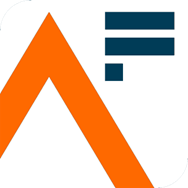Horizon scanning and futures thinking: tools for government analysts

Analysts across government are used to drawing on data to explain what has happened to inform decisions about what should happen next. But in an era marked by rapid change and uncertainty, traditional approaches may not be enough. Horizon scanning and other Futures methods can help analysts explore possible long-term changes, examine how trends merge, identify emerging risks and opportunities, and test the resilience of policies and plans.
The Government Office for Science (GO-Science) supports the use of these methods across government through its updated Futures Toolkit and training. This offers practical guidance on futures approaches, from horizon scanning and trend analysis to scenario building, helping government analysts navigate the uncertainty and complexity of today’s world.
Horizon scanning: identifying weak signals and emerging issues
Horizon scanning is a systematic approach to detecting signs of change early. To do this, analysts monitor developments across different domains (PESTLE model: political, economic, social, technological, legal and environmental trends) to identify ‘weak signals’ — emerging issues that could grow in significance.
This scanning draws on a wide range of sources, including academic research, media reports, expert interviews and horizon scans published by other organisations. Analysts can assess these signals to identify trends and consider their potential implications for government. Using non-traditional sources alongside peer-reviewed evidence can expose emerging issues that formal research may miss.
By regularly scanning and synthesising insights, analysts help departments maintain awareness of emerging issues, avoid surprises and make more informed strategic choices. The Futures Toolkit provides templates and advice to help analysts plan and run horizon scanning activities, which may take the form of structured workshops, expert consultations, or scanning databases to capture and synthesise emerging signals.
From trends to scenarios: applying creativity and structured imagination
Horizon scanning and futures thinking do not aim to predict the future. Instead, they inform approaches such as scenario development — applying creativity within a structured framework to explore how trends and uncertainties may interact and evolve.
GO-Science often works with departments to turn horizon scanning findings into scenario narratives. These scenarios are built collaboratively, drawing on diverse expertise to examine plausible futures and their effects on stakeholders, policy or strategy. In its own work, GO-Science integrates futures methods with rigorous analysis to help inform cross-government priorities and advice. They help policy teams and senior decision-makers test whether current policies are robust, identify new risks and opportunities and generate innovative options. You can find more information about GO-Science’s Futures work on GOV.UK.
Scenario planning encourages analysts to embrace complexity and uncertainty. While creativity and imagination are essential at this stage, the approach remains grounded in evidence and structured analysis.
Building futures capability across the Analysis Function
The Analysis Function brings together a community of professional analysts supporting government decision-making, with horizon scanning and futures thinking increasingly recognised as core analytical capabilities.
Analysts applying these methods help government departments look beyond immediate pressures and consider long-term implications. This supports better risk management, adaptable policy and stronger public value.
Futures thinking and horizon scanning do not replace traditional analysis — they complement it. Together, they help analysts advise with confidence not only on what is likely, but also on what is possible.
